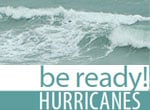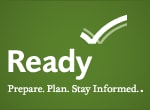Tsunamis: Water Quality
A tsunami creates a surge of ocean water that can sometimes engulf large geographic areas. As the ocean water comes ashore, drinking water wells can become submerged and potentially contaminated with microorganisms (bacteria, viruses, parasites) and chemicals that can adversely affect human health. The sea salts associated with saltwater flooding of coastal drinking water supplies are not an immediate health threat.
Because of the unpleasant taste of saltwater, most people will not ingest (swallow) a large enough amount to cause immediate health problems. However, disease-causing microorganisms spread by the flood do not normally produce a strong taste. If water containing disease-causing microorganisms is ingested, even in small amounts, it may cause immediate, life-threatening health problems such as chronic diarrhea, cholera, and serious infections. Using contaminated water to clean small cuts and open wounds also poses a danger of serious infections.
Additionally, chemical contaminants often found in floodwater can easily contaminate wells. Chemical contaminants can include fuel products from overturned fuel tanks, or pesticides that may have been stored in flooded areas. Ingesting water containing these types of chemical contaminants may result in threats to life and health.
After wells have been properly cleaned out and they begin to refill with water from the aquifer, much of the increase in salinity (saltiness) should subside. Shallow wells may be more affected than deeper wells because of the higher loading of saltwater in the upper layer of soil. Although recovery of shallow wells may be slower than that of deeper wells, the salinity of shallow wells should lessen over time.
After a tsunami, people in affected areas should listen for public announcements on the safety of the water supply. Flooded private wells will need to be tested and disinfected after flood waters recede. If odor, taste, unusual discoloration, or the results of preliminary water testing lead people to suspect that area wells are contaminated by fuel, pesticides, or other chemicals, a chemical analysis of drinking water is strongly recommended. Questions about testing should be directed to local authorities.
Water for Drinking, Cooking, and Personal Hygiene
Safe water for drinking, cooking, and personal hygiene includes bottled, boiled, or treated water. After a tsunami, water sources may be contaminated with saltwater. Your local authorities can make specific recommendations for boiling or treating water in your area.
Learn more about making water safe after a disaster.
- WHO South-East Asia Earthquake and Tsunami Web Site: Household Water Treatment and Safe Storage Following Emergencies and Disastersexternal icon
- WHO: The International Network to Promote Household Water Treatment and Safe Storageexternal icon
- U.S. Environmental Protection Agency Advice on Flooded Wellsexternal icon


